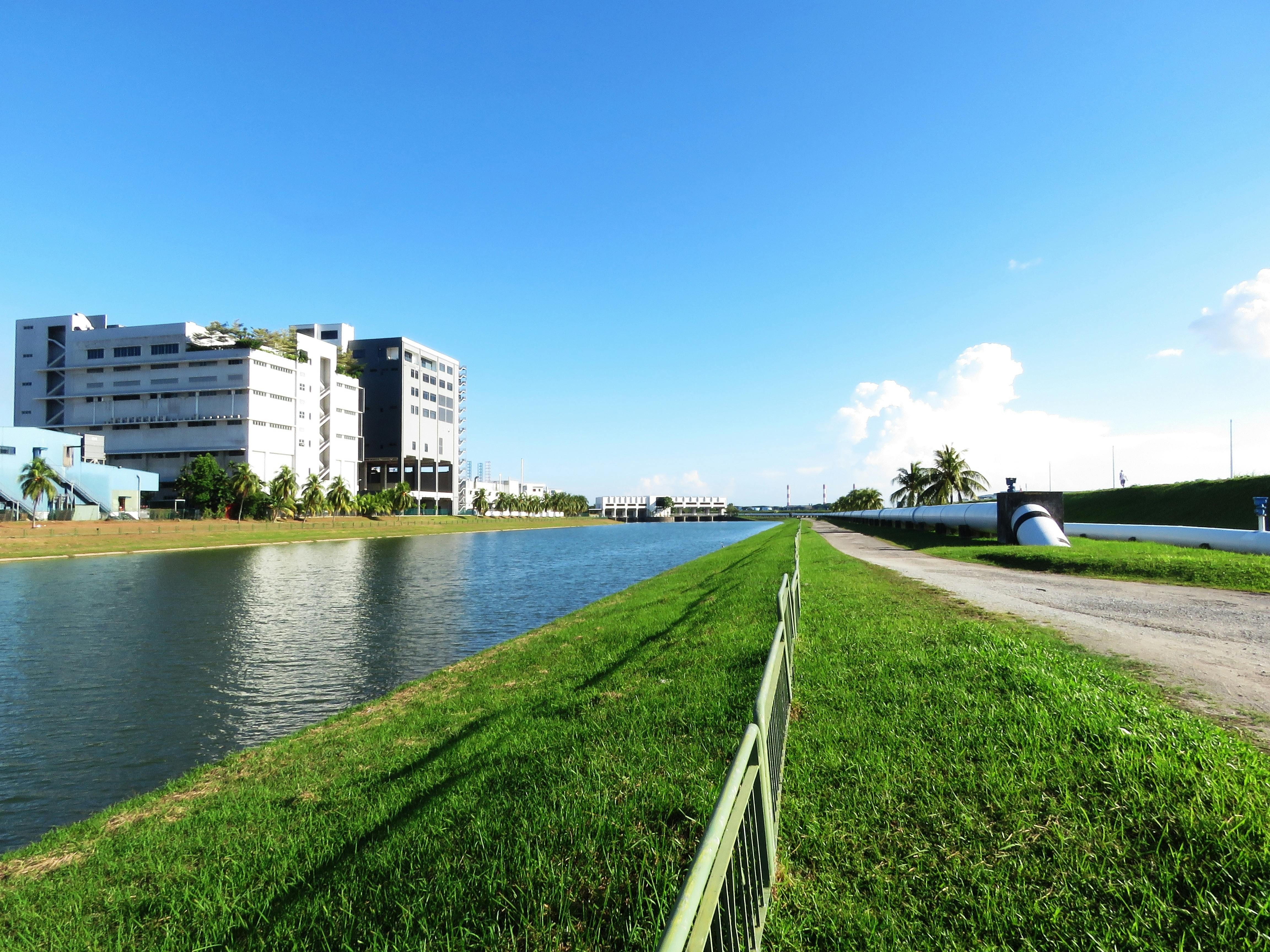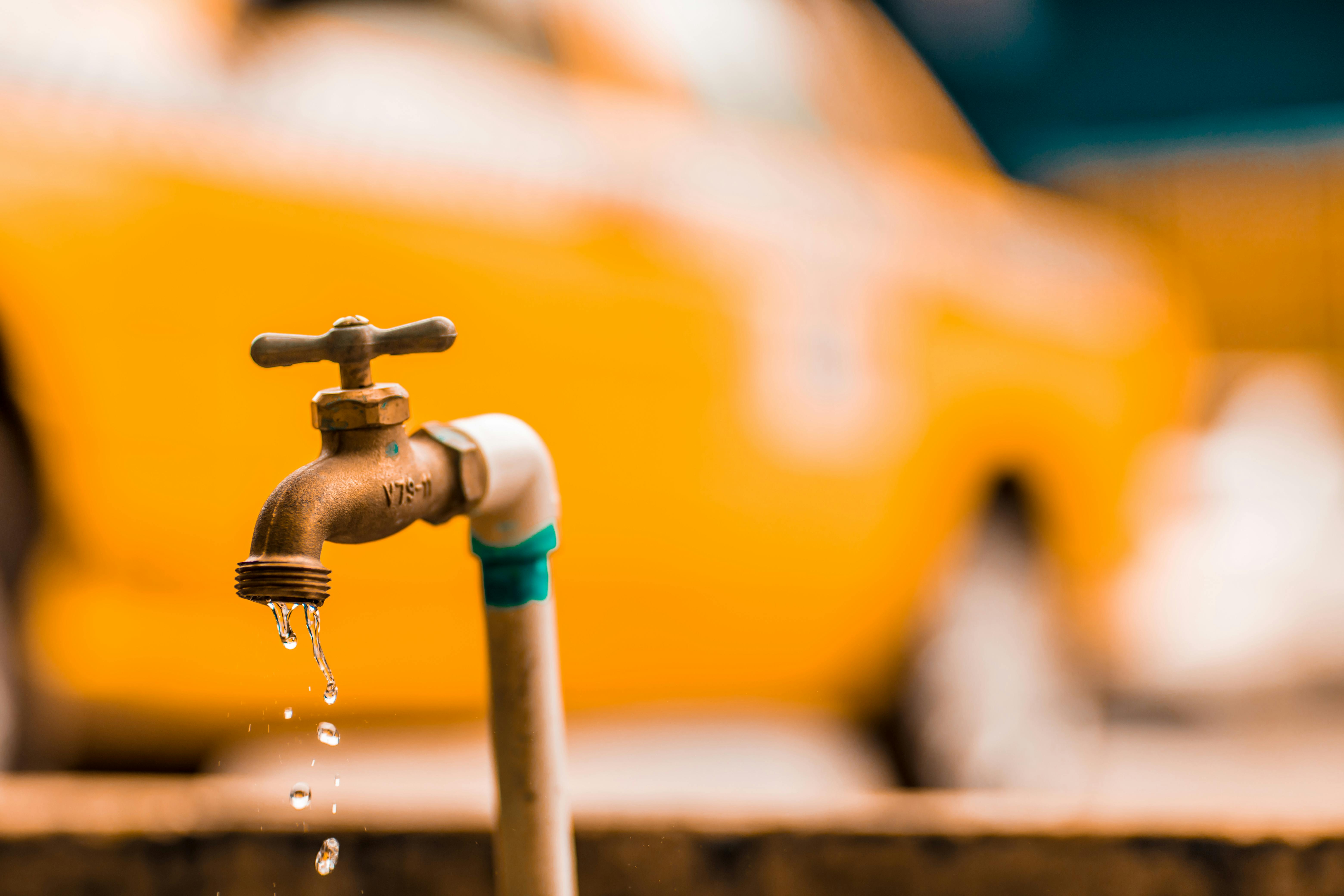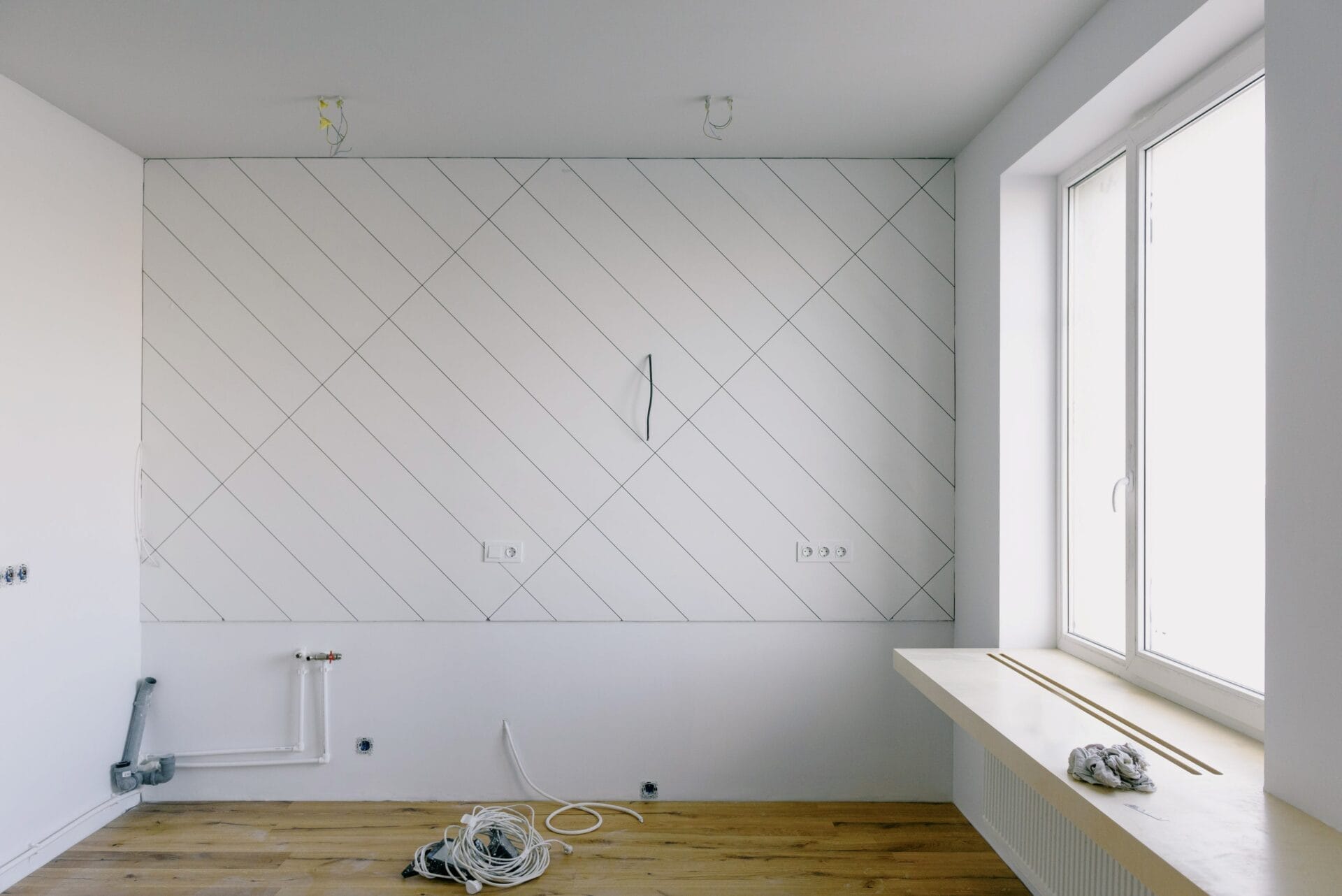If you have a galvanized water pipe that needs repair, then it is important to understand the steps necessary to fix it. Galvanized pipes are made of steel coated with zinc, which protects the metal from corrosion and rust. However, due to their age, galvanized pipes can become corroded and need to be repaired or replaced in order to restore water flow. This guide will explain how to fix a galvanized water pipe in a few simple steps.To fix a galvanized water pipe leak, you will need to turn off the water supply to the pipe, then drain the pipe of any remaining water. Once the pipe is dry, you can apply some plumber’s tape or a patch kit to seal the leak. If there is a hole in the pipe, you may need to use an epoxy putty or a patch clamp to cover it. For more serious leaks or holes, you may need to cut out and replace that section of the pipe.
Preparing the Area Before Fixing a Galvanized Water Pipe
The first step in fixing a galvanized water pipe is to properly prepare the area before beginning any repair work. This is an important step that should not be overlooked as it can help to ensure that the repair job is completed properly and safely. Proper preparation involves ensuring that the area around the pipe is free from debris, clutter, and any other obstructions that could potentially interfere with the repair job.
It is also important to turn off the main water supply before beginning any repair work on a galvanized water pipe. This will ensure that no water will flow out of the pipe while it is being worked on, which can help reduce potential water damage and safety risks.
Once the main water supply has been turned off, all of the valves connected to the galvanized pipe should be closed as well. This will prevent any other sources of water from entering into or flowing out of the pipe while it is being worked on.
Finally, it may also be necessary to remove any insulation surrounding the galvanized pipe in order to gain access to it. This should only be done if absolutely necessary, however, as insulation can provide important protection against extreme temperatures and moisture levels that could potentially damage or weaken the steel components of a galvanized water pipe.
Once all of these steps have been completed, then it will be time to begin working on repairing or replacing a galvanized water pipe. It is important to take all necessary precautions when dealing with these types of pipes as they are highly vulnerable to damage and corrosion if not handled properly. Following these simple steps can help ensure that any repair job involving a galvanized water pipe goes smoothly and safely.
Necessary Tools and Materials for Repairing A Galvanized Water Pipe
Repairing a galvanized water pipe requires a set of specialized tools. These tools include a hacksaw, adjustable wrench, pipe wrench, pipe cutter, wire brush and screwdriver. In addition to these tools, you will need some materials to complete the repair. These materials include silicone sealant, primer and patching compound.
Using a hacksaw is the first step in repairing galvanized water pipes. It is important to make sure that you use the right size blade for your particular pipe. After cutting the pipe with the saw, use an adjustable wrench to remove the old galvanized fittings from the pipe.
Next, use a pipe wrench to remove any debris or corrosion from inside the pipe. Be sure to wear protective gloves when doing this step as it can be dangerous if not done properly. Using a wire brush will help remove any rust or dirt that has accumulated inside of the pipe.
Once all debris has been removed from the pipe, it is time to apply primer and patching compound to seal it back up again. Make sure to read all instructions carefully before applying any materials as they can be hazardous if not applied correctly. Finally, use silicone sealant around the edges of the patch and let dry before using again.
Step 1: Turn off the Water
The first step in repairing a galvanized water pipe leak is to turn off the water supply. This will prevent further damage from occurring to the pipe and the surrounding area. It is important to make sure that all water sources are turned off before attempting to repair the leak.
Step 2: Check the Leak
Once the water has been shut off, it is time to inspect the leak and determine its cause. It is possible that a loose joint or cracked pipe could be causing the leak. If this is the case, it may be necessary to replace or repair the damaged part of the pipe.
Step 3: Clean Around The Leak
Before beginning any repairs on a galvanized water pipe, it is important to clean around the area of the leak. This will help remove any debris that may have accumulated around it and make it easier for repairs to take place. Using a wire brush or sandpaper can help remove any rust that may have built up around the affected area as well.
Step 4: Apply an Epoxy Compound
Once all debris has been removed, an epoxy compound should be applied to both sides of the leaking area of pipe. This will provide a waterproof seal that should last for many years without needing additional repairs. It is important to allow plenty of time for this compound to dry before turning on the water again and testing it for leaks.
Step 5: Test For Leaks
When all repairs have been made, it is time to test for leaks by turning on all relevant valves connected with this particular galvanized water pipe system. Make sure that all areas where epoxy was applied are checked thoroughly before turning on any valves completely, as this could lead to further damage if not properly inspected first.
Applying The Sealant To Fix A Galvanized Water Pipe Leak
Leaks in galvanized water pipes can be a major hassle and often require professional help to fix. However, in some cases, a simple sealant can be applied to repair the leak. This sealant is made of specially designed rubber materials and will not harm the pipes or the water itself. It is important to take care when applying the sealant as incorrect application can lead to further damage or even more severe leaks.
The first step is to turn off the water supply and drain the pipes completely. This will ensure that no excess water remains which could affect the efficacy of the sealant. Once this is done, it is important to thoroughly clean the area around the leak using an abrasive cloth or brush. This will remove any dirt, grime and other debris which could affect how well the sealant adheres to the pipe.
Once clean, apply a thin layer of primer over all affected areas and allow it to dry completely before proceeding with applying the sealant itself. The sealant should then be applied in a continuous line along all affected areas, ensuring that no gaps are left for water to escape through. Once this is done, use a wet cloth or sponge to smooth out any uneven surfaces before allowing it time to dry completely.
Once dry, turn on your water supply again and check for any leaks around where you have applied your sealant. If there are none present then congratulations – you have successfully sealed your galvanized water pipe! If however you do find that there are still some leaks present then it may be necessary to apply more sealant or even call in a professional plumber for help – better safe than sorry!

Installing Compression Fittings To Fix A Galvanized Water Pipe Leak
Galvanized water pipes are a common source of leaks in homes. While they are typically strong and reliable, they can eventually deteriorate due to age and corrosion. When this happens, the only solution is to replace the pipe or to install compression fittings. Installing compression fittings is an easy and cost-effective way to patch a leak in a galvanized pipe without having to replace the entire pipe. Here’s how to do it:
The first step is to turn off the water supply that is connected to the pipe with the leak. Once this has been done, you’ll need to locate the leaking area and mark it with a pen or marker. You’ll then need to measure and cut a section of replacement pipe that is slightly longer than the area that needs repair. After that, you’ll need to sand down both ends of the replacement pipe until it’s smooth.
Once that’s done, you’ll need to attach a compression nut and ferrule onto one end of the replacement pipe, followed by attaching a compression fitting onto the other end. You’ll then need to slide the ferrule onto your existing galvanized water pipe, followed by sliding on the compression nut. Make sure that everything is securely tightened before continuing.
Finally, you’ll need to attach your new section of replacement pipe between the two compression fittings and make sure that everything is snugly fitted together. Once you’re satisfied with your work, turn on your water supply and check for any leaks at all of your connections. If there are no leaks present, then you’ve successfully installed your new compression fittings!
Soldering The Pipes To Repair A Galvanized Water Pipe Leak
Soldering a galvanized water pipe is a common plumbing repair that requires a good amount of skill and patience. To solder the pipes correctly, you will need to understand the process and have the right tools. The first step is to prepare the surface of the pipe by cleaning it with a wire brush or sandpaper. This will remove any debris, rust, or dirt that could inhibit the solder from adhering properly. You will also need to apply flux to both surfaces of the pipe before soldering. Flux helps to protect the metal from oxidation and also acts as an adhesive for the solder.
Once your surfaces are clean and fluxed, you will need to heat both pieces of pipe at once with a propane torch until they are hot enough to melt the solder. You should be careful not to overheat them as this can damage both pieces of pipe. Once they have reached their proper temperature, you can then apply the solder along each joint. Make sure that you move quickly and evenly so that all parts of each joint are properly soldered together.
Finally, once your joints are soldered together, you should allow them to cool for several minutes before testing for any leaks. If there are any leaks present, then you may need to apply more flux or use a larger amount of solder in order to seal up the joint completely. With patience and practice, soldering galvanized pipes can be an effective way of repairing water pipe leaks without having to replace them entirely.
Replacing The Old Pipes With New Pipes To Repair A Galvanized Water Pipe
Replacing the old pipes with new pipes is an important part of the maintenance process for a galvanized water pipe. Over time, galvanized pipes can corrode and cause water damage to your home. It is important to replace these old pipes with new ones in order to ensure that your water supply is safe and reliable. Replacing the old pipes can also help reduce energy costs as newer galvanized pipes are more efficient.
The first step in replacing old galvanized water pipes is to identify where the existing pipe is located. You may need to consult a local professional plumber in order to accurately locate the existing pipe. Once located, you will need to disconnect the existing pipe from any other connected piping. This will require careful work with a wrench or other tools.
Once disconnected, you can remove the old pipe by cutting it out with a hacksaw or other suitable tool. Once removed, you can then install the new pipe in its place using appropriate fittings and connections. It is important to use appropriate sealants when connecting the new pipe in order to ensure a tight seal and prevent any leaks or water damage from occurring.
Once all of the connections are made, you can turn on your water supply and check for leaks or other issues that may need attention before using your water supply again. If everything looks good, you have successfully replaced your old galvanized water pipes with new ones and can enjoy safe and reliable plumbing for years to come!

Conclusion
Repairing a galvanized water pipe is not an easy task but it can be done if you have the right tools and knowledge. The first step is to identify the source of the problem by inspecting the pipe and using a pressure gauge to measure pressure. Once you have identified the issue, you can then decide which method to use for repair. There are various methods available, such as replacing the entire pipe or using a patch kit, depending on your needs. It is important to follow all safety protocols and take your time when attempting any kind of repair.
With patience and care, galvanized water pipes can be fixed with relative ease. Remember that this kind of repair should only be attempted by experienced professionals or those with adequate knowledge and familiarity with plumbing repairs. If you are unfamiliar with plumbing repairs, it is best to hire a professional plumber to ensure quality results.

